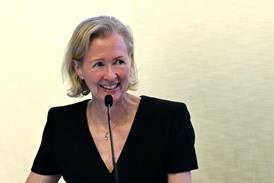The number of practising solicitors is set to smash through the 100,000 mark, official statistics will reveal this week.
The growth shows no signs of slowing, with the numbers of undergraduate law students and legal practice course (LPC) places both surging by 10%.
The Law Society's annual statistical report found a record 96,757 practising solicitors as of 31 July 2004. After several years of steady 4% annual growth, the number is almost certain to break through 100,000 this year. There were 121,165 solicitors on the roll.
There was the first, albeit tiny, rise in several years in the number of private practice law firms. There were 9,211 firms in 2004, 45% of which had sole principals; only 475 firms (5%) had 11 or more partners. Some 22.4% of practising solicitors worked in-house.
The growth in the number of women and ethnic minority solicitors continues apace. Some 40.5% of all solicitors - and more than half of those under the age of 40 - were women, as were 57% of newly qualifieds last year. However, men were more than twice as likely as women to be partners.
Those from ethnic minority groups accounted for 8.3% of all practising solicitors (up from 7.9% in 2003), including 18% of newly qualifieds, and the proportion is now above that for the general population. But only 23% of ethnic minority solicitors were partners, compared to 39% of white Europeans.
Figures from the LPC indicate that these trends are only accelerating: 63% of students were women and 24% from ethnic minority groups.
The report said that in 2003, 13,000 undergraduates began law degrees, while last year the LPC expanded to 10,601 full-time and part-time places. However, not all places are filled.
Law Society chief executive Janet Paraskeva said: 'I am pleased that working as a solicitor is increasingly popular with young women and also people from minority ethnic groups.
'As these new solicitors progress, we expect to see more women reach senior positions in law firms. But opportunities for achieving partnership are in decline. In the last year, there was a 3% drop (to 37%) in the percentage of the profession in private practice at partner level. This is evidence of firms implementing efficient business models in an increasingly competitive market.'
See Editorial
Charity Explorer provides a reputable reference tool for solicitors, will-writers and their clients who want to leave a legacy or charitable gift.
Visit Charity Explorer
Whether you are looking for legal expert witnesses, legal training/CPD providers, international law firms, administration of estates, legal software suppliers, barristers chambers or any other general legal service, the Legal Services Directory will provide a suitable option.
Visit Legal Services Directory

























No comments yet